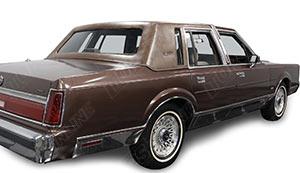BMW 320i xDrive Fuel Pressure Sensor Replacement Cost
Between $148 and $160
The average cost for a BMW 320i xDrive Fuel Pressure Sensor Replacement is between $148 and $160. Labor costs are estimated between $44 and $56 while parts are typically priced around $104. This range does not include taxes and fees, and does not factor in your unique location. Related repairs may also be needed. For a more accurate estimate based on your location, use our Fair Price Estimator below. This range does not include taxes and fees, and does not factor in your unique location. Related repairs may also be needed.
Understanding the BMW 320i xDrive Fuel Pressure Sensor Replacement Cost
When your BMW 320i xDrive begins to exhibit signs of fuel system trouble, a faulty fuel pressure sensor is often the culprit. Understanding the BMW 320i xDrive Fuel Pressure Sensor Replacement Cost is crucial for budgeting and making informed decisions about your vehicle's maintenance. This guide will delve into the various factors that influence this cost, provide a detailed breakdown, and offer strategies to help you save money.
Detailed Cost Breakdown
The overall BMW 320i xDrive Fuel Pressure Sensor Replacement Cost is influenced by several components, primarily the price of the part itself and the labor involved in its installation.
Regional Cost Variations: It's important to note that the cost of automotive repairs can vary significantly based on your geographic location. Major metropolitan areas or regions with a higher cost of living may see slightly higher labor rates compared to rural areas.
OEM vs. Aftermarket Parts Costs: The figures provided are generally based on OEM (Original Equipment Manufacturer) parts. While aftermarket parts can sometimes be less expensive, it's vital to ensure they meet the quality and specifications required for your BMW 320i xDrive to avoid potential performance issues or premature failure.
Shop Type Differences (Dealership vs. Independent): BMW dealerships typically have higher labor rates due to specialized training, tools, and overhead. Independent European auto repair shops often offer more competitive pricing for a BMW 320i xDrive Fuel Pressure Sensor Replacement, while still maintaining a high standard of service.
Factors Affecting Cost
Several variables can influence the final BMW 320i xDrive Fuel Pressure Sensor Replacement Cost:
- Vehicle Mileage Impact: While a fuel pressure sensor itself doesn't have a direct mileage-based replacement schedule, higher mileage vehicles may be more prone to general wear and tear, potentially leading to related issues that could increase the overall repair bill.
- Geographic Location Effects: As mentioned, your physical location plays a role. Labor rates are a primary driver of these differences.
- Additional Repairs Commonly Needed: Sometimes, a failing fuel pressure sensor is indicative of broader fuel system issues. Technicians may identify other components, such as the fuel pump, fuel filter, or fuel injectors, that are also nearing the end of their lifespan and recommend their replacement concurrently. This would, of course, add to the total cost.
- Seasonal Pricing Variations: While less common for specific part replacements, general repair shop demand can fluctuate seasonally, potentially impacting labor availability and, indirectly, cost.
Diagnostic & Repair Process
Understanding the diagnostic and repair process can demystify the BMW 320i xDrive Fuel Pressure Sensor Replacement Cost and empower you to have more informed conversations with your mechanic.
How are Fuel Pressure Sensor Issues Diagnosed?
A technician will begin diagnosis of a faulty fuel pressure sensor by running a diagnostic scan with a scan tool connected to the vehicle's data port. The scan will not tell the technician if the sensor is bad, but it can reveal if the circuit for the sensor has a fault in it. If the scan is positive, the technician will access the sensor, unplug the harness wires, and test the sensor as well as the wire harness plugs. Using a multimeter, the technician will check the resistance reading of the sensor. If the readings are off, the sensor needs to be replaced. If the readings are normal, the harness is checked for continuity with the multimeter.
How are Fuel Pressure Sensors Replaced?
To replace the fuel pressure sensor in most vehicles, a technician must remove the fuel pump assembly from the fuel tank. First, the technician will relieve the residual pressure in the fuel system by disabling the fuel pump (usually by removing a fuse) and cranking the ignition. Then the battery is disconnected. On some cars and SUVs, the top of the fuel tank and the fuel pump assembly are accessible from inside the passenger compartment. If this is the case, the technician removes the back seat and an access cover in the floor below. On trucks, and on many cars, the fuel tank must be removed from underneath the vehicle in order to gain access to the fuel pump assembly. In either case, once access to the fuel pump assembly is achieved, the technician will unplug the wiring harness connectors from the top of the assembly. The fuel lines are detached, often using a special tool for the connectors. The technician will remove the retaining ring that holds the fuel pump assembly in place and pull the assembly out of the tank. The fuel pressure sensor is unplugged from the assembly and detached. A new sensor is installed in its place. The pump is inserted into the tank, secured, and plugged in. If the fuel tank was removed from the vehicle, it is reinstalled. The fuel system is enabled and the system is tested.
Our Recommendations for Fuel Pressure Sensor Issues:
Our recommendations include installing a new fuel pump assembly gasket when a fuel pressure sensor is being replaced. Also, any mounting hardware for the fuel tank that might be compromised should also be replaced.
What to Look Out For When Dealing with Fuel Pressure Sensor Issues:
The electrical system on the vehicle should be disabled to prevent accidental arcing of wires during the repair that might cause the open fuel system to ignite.
Can I Replace the Fuel Pressure Sensor Myself?
If the fuel pump assembly is easily accessible underneath the rear seat of a vehicle, someone with intermediate to advanced DIY skills might be able to tackle the job. A diagnostic scan is necessary and experience with a multimeter is needed to avoid replacing a sensor that is not bad. If the fuel tank needs to be removed from the vehicle, the repair should be left to a qualified technician at a trusted repair shop.
Warning Signs & Symptoms
Recognizing the signs of a failing fuel pressure sensor can prevent further damage and save you money in the long run.
- Vehicle Mileage Impact: While a fuel pressure sensor itself doesn't have a direct mileage-based replacement schedule, higher mileage vehicles may be more prone to general wear and tear, potentially leading to related issues that could increase the overall repair bill.
- Geographic Location Effects: As mentioned, your physical location plays a role. Labor rates are a primary driver of these differences.
- Additional Repairs Commonly Needed: Sometimes, a failing fuel pressure sensor is indicative of broader fuel system issues. Technicians may identify other components, such as the fuel pump, fuel filter, or fuel injectors, that are also nearing the end of their lifespan and recommend their replacement concurrently. This would, of course, add to the total cost.
- Seasonal Pricing Variations: While less common for specific part replacements, general repair shop demand can fluctuate seasonally, potentially impacting labor availability and, indirectly, cost.
Cost-Saving Strategies
Minimizing the BMW 320i xDrive Fuel Pressure Sensor Replacement Cost is achievable with a few smart strategies.
- Vehicle Mileage Impact: While a fuel pressure sensor itself doesn't have a direct mileage-based replacement schedule, higher mileage vehicles may be more prone to general wear and tear, potentially leading to related issues that could increase the overall repair bill.
- Geographic Location Effects: As mentioned, your physical location plays a role. Labor rates are a primary driver of these differences.
- Additional Repairs Commonly Needed: Sometimes, a failing fuel pressure sensor is indicative of broader fuel system issues. Technicians may identify other components, such as the fuel pump, fuel filter, or fuel injectors, that are also nearing the end of their lifespan and recommend their replacement concurrently. This would, of course, add to the total cost.
- Seasonal Pricing Variations: While less common for specific part replacements, general repair shop demand can fluctuate seasonally, potentially impacting labor availability and, indirectly, cost.
FAQ Section
Here are answers to common questions regarding the BMW 320i xDrive Fuel Pressure Sensor Replacement Cost:
- Vehicle Mileage Impact: While a fuel pressure sensor itself doesn't have a direct mileage-based replacement schedule, higher mileage vehicles may be more prone to general wear and tear, potentially leading to related issues that could increase the overall repair bill.
- Geographic Location Effects: As mentioned, your physical location plays a role. Labor rates are a primary driver of these differences.
- Additional Repairs Commonly Needed: Sometimes, a failing fuel pressure sensor is indicative of broader fuel system issues. Technicians may identify other components, such as the fuel pump, fuel filter, or fuel injectors, that are also nearing the end of their lifespan and recommend their replacement concurrently. This would, of course, add to the total cost.
- Seasonal Pricing Variations: While less common for specific part replacements, general repair shop demand can fluctuate seasonally, potentially impacting labor availability and, indirectly, cost.
How much does BMW 320i xDrive Fuel Pressure Sensor Replacement cost?
The average cost for a BMW 320i xDrive Fuel Pressure Sensor Replacement is between $148 and $160, with parts typically costing around $104 and labor between $44 and $56.
Can I drive with this problem?
While you might be able to drive with a faulty fuel pressure sensor, it's not recommended. Performance issues, decreased fuel efficiency, and potential damage to other fuel system components can occur. It's best to address the issue promptly.
How long does BMW 320i xDrive Fuel Pressure Sensor Replacement take?
The replacement process typically takes between 1 to 2 hours, depending on the accessibility of the fuel pump assembly and the technician's experience.
What causes this issue?
Fuel pressure sensors can fail due to age, wear and tear, contamination in the fuel system, or electrical issues within the sensor itself or its wiring harness.
Don't let a faulty fuel pressure sensor leave you stranded. By understanding the costs, potential issues, and saving strategies, you can ensure your BMW 320i xDrive runs smoothly and efficiently. Get a personalized quote from a trusted mechanic today to address your vehicle's needs.

